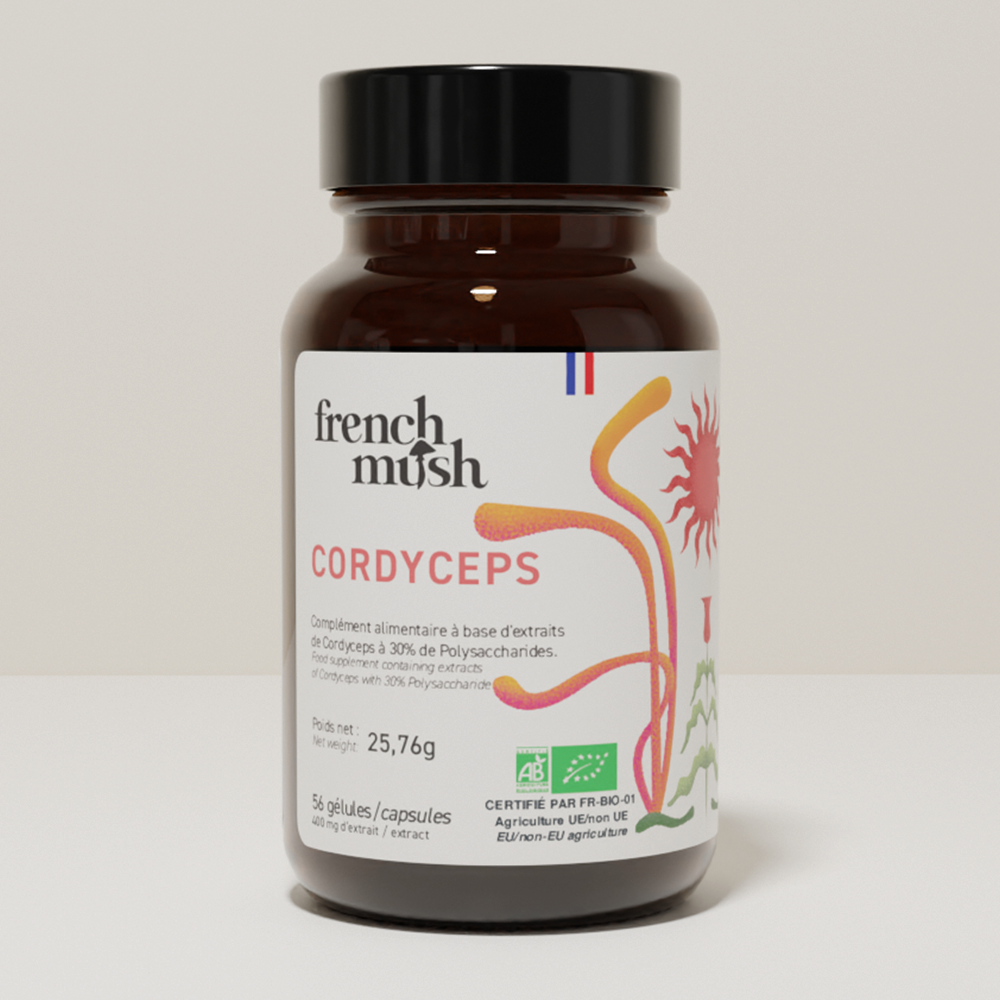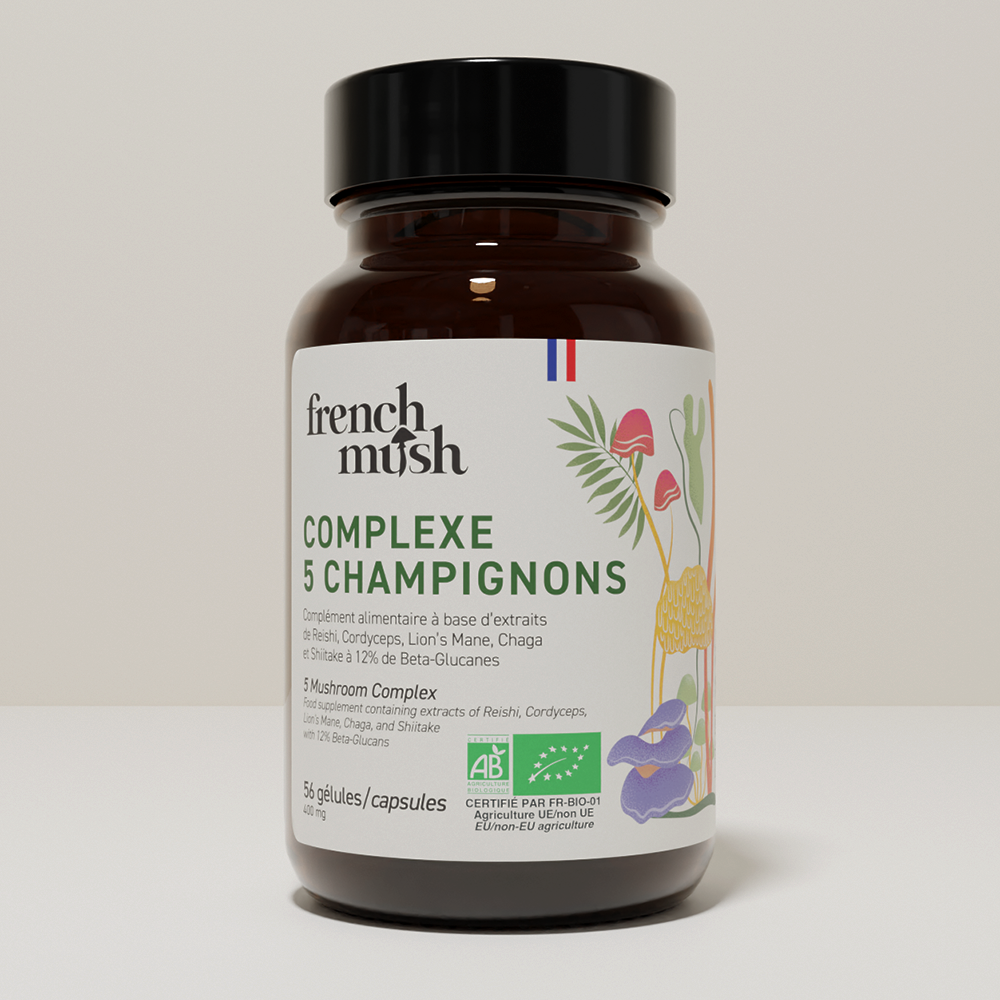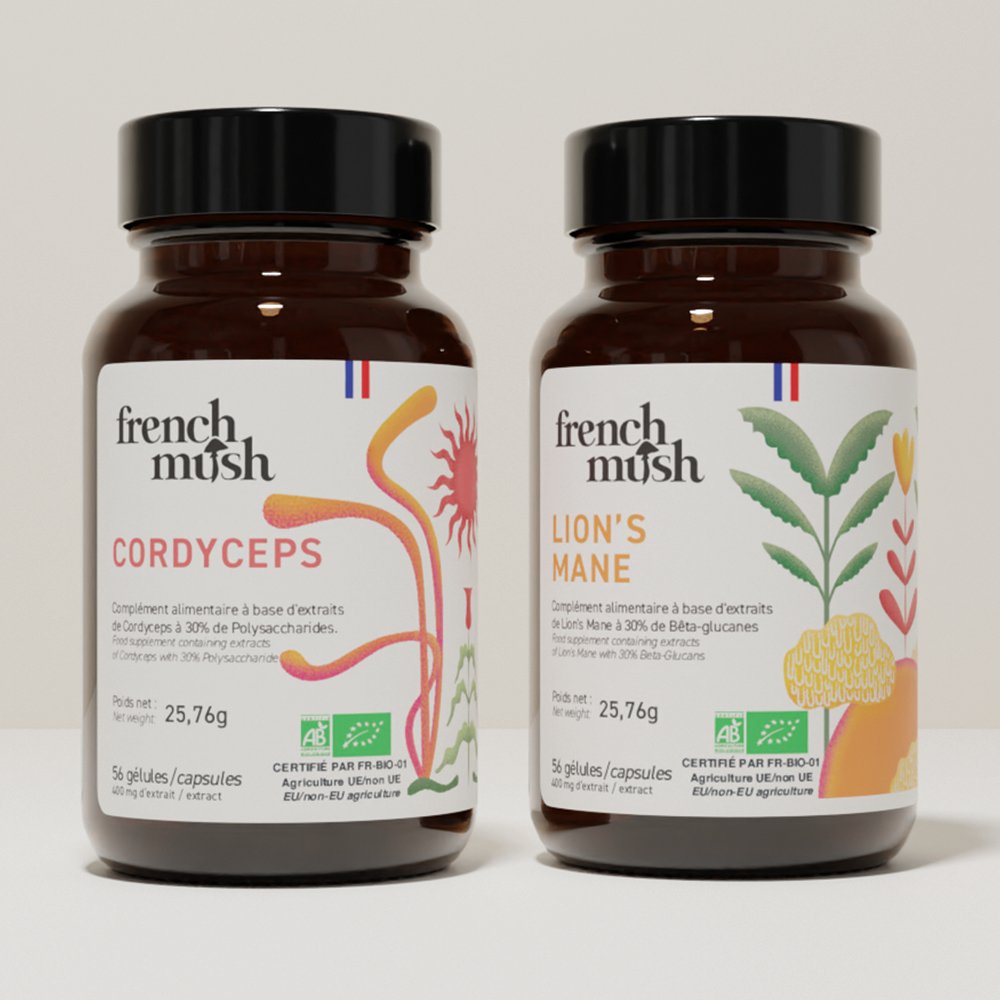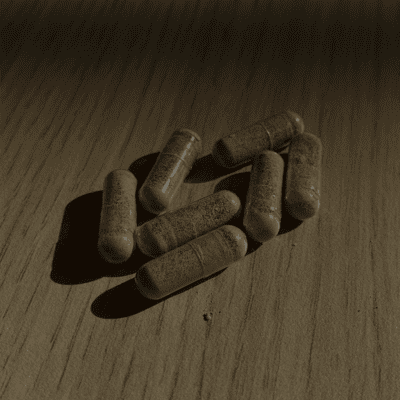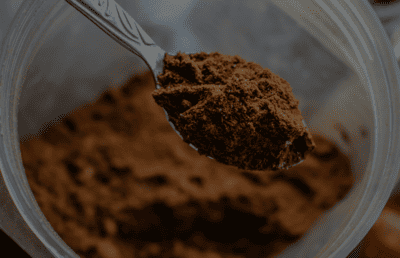Erinacin is a natural compound with neuroprotective properties, extracted from a curious mushroom called hydne hedgehog or more commonly lion's mane.
Long ignored outside Asian borders, this fascinating mycelium is today proving to be an invaluable source for neurological well-being.
But what exactly is erinacin and why does it deserve our attention?
French Mush gives you an update in this article.
The origin of the hedgehog hydne
A treasure of European forests
Hedgehog hydne, scientifically named Hericium erinaceus, is a mushroom that traditionally grows in European forests, although it is better known in Asia where its medicinal properties have long been appreciated.
Aspect et identification
This mushroom is easily recognizable thanks to its unique appearance: a mass of creamy white hair truly resembling a lion's mane.
It is this singularity which has earned it numerous evocative nicknames, but it is above all for its richness in bioactive compounds such as erinacin that it is today attracting the attention of scientists.
Erininacins: key compounds for neuroprotection
Exceptional molecules
Erinacins are compounds found exclusively in the mycelium of Hericium erinaceus.
They have a complex structure which gives them exceptional neurotropic properties.
Mechanisms of action
Studies have shown that erininacins stimulate neuron regeneration by increasing the production of nerve growth factor (NGF).
NGF plays a crucial role in the survival, development and function of sensory and sympathetic neurons.
Neurological benefits of erinacins
Protection against neurodegenerative diseases
Erininacins are particularly promising in the fight against neurodegenerative diseases such as Alzheimer's disease. Alzheimer's and Parkinson's.
They can help prevent neuronal degeneration and even promote the repair of damaged nerve tissue.
Effects on cognition
By stimulating the synthesis of nerve growth factor, erinacins may improve cognitive abilities, including memory and learning.
This opens the door to their potential use in treatments aimed at increasing mental performance.
Application and consumption of hedgehog hydne or Lion’s Mane
Forms of consumption
Hedgehog hydne can be consumed in several forms:
- In the form of dietary supplements, such as capsules .
- Powder to be diluted in drinks such as smoothies.
Recommended dosages
It is important to follow the dosages we recommend when consuming supplements containing erinacins.
These recommendations are mentioned on each of our products, allowing you to adapt your dosages according to your forms of consumption.
Additionally, the French Mush team strongly recommends that you consult a healthcare professional if you have a medical history, or allergies potentially related to mushrooms.
Sources :
J Cell Biol. 1988 Nov 1; 107(5): 1927–1938. doi: 10.1083/jcb.107.5.1927
Docherty S, Doughty FL, Smith EF. The acute and chronic effects of Lion’s mane mushroom supplementation on cognitive function, stress and mood in young adults: A double-blind, parallel groups, pilot study. Nutrients [Internet]. 2023 [cited 2024 Mar 12];15(22):4842. Available from: http://dx.doi.org/10.3390/nu15224842
Brandalise F, Roda E, Ratto D, Goppa L, Gargano ML, Cirlincione F, et al. Hericium erinaceus in neurodegenerative diseases: From bench to bedside and beyond, how far from the shoreline? J Fungi (Basel) [Internet]. 2023 [cited 2024 Mar 12];9(5):551. Available from: https://www.mdpi.com/2309-608X/9/5/551
Wong KH, Naidu M, David P, Abdulla MA, Abdullah N, Kuppusamy UR, Sabaratnam V. “Neuroregenerative potential of Lion’s Mane mushroom, Hericium erinaceus (Bull.: Fr.) Pers. (higher Basidiomycetes), in the treatment of peripheral nerve injury (review).” Int J Med Mushrooms. 2012;14(5):427-446.
Smith JE, Rowan NJ, Sullivan R. “Medicinal mushrooms: a rapidly developing area of biotechnology for cancer therapy and other bioactivities.” Biotechnol Lett. 2002;24(24):1839-1845.
Kushairi, Naufal, et al. “Lion’s mane mushroom, Hericium erinaceus (Bull.: Fr.) Pers. suppresses H2O2-induced oxidative damage and LPS-induced inflammation in HT22 hippocampal neurons and BV2 microglia.” Antioxidants 8.8 (2019): 261.
Kawagishi H. Chemical studies on bioactive compounds related to higher fungi. Biosci Biotechnol Biochem [Internet]. 2021 [cited 2024 Mar 12];85(1):1–7. Available from: https://pubmed.ncbi.nlm.nih.gov/33577664/



